This winter, as the rain poured down day after day, I found time to start some electrical projects. Since I’ve never done electrical work in my life, this was a bit intimidating initially. What if I electrocuted myself? What if I messed something up and set the boat on fire? I had read the electrical chapters in Nigel Calder’s book – twice – but some parts were pretty advanced, and I still didn’t feel like I understood it all. Getting started turned out to be the hardest part.
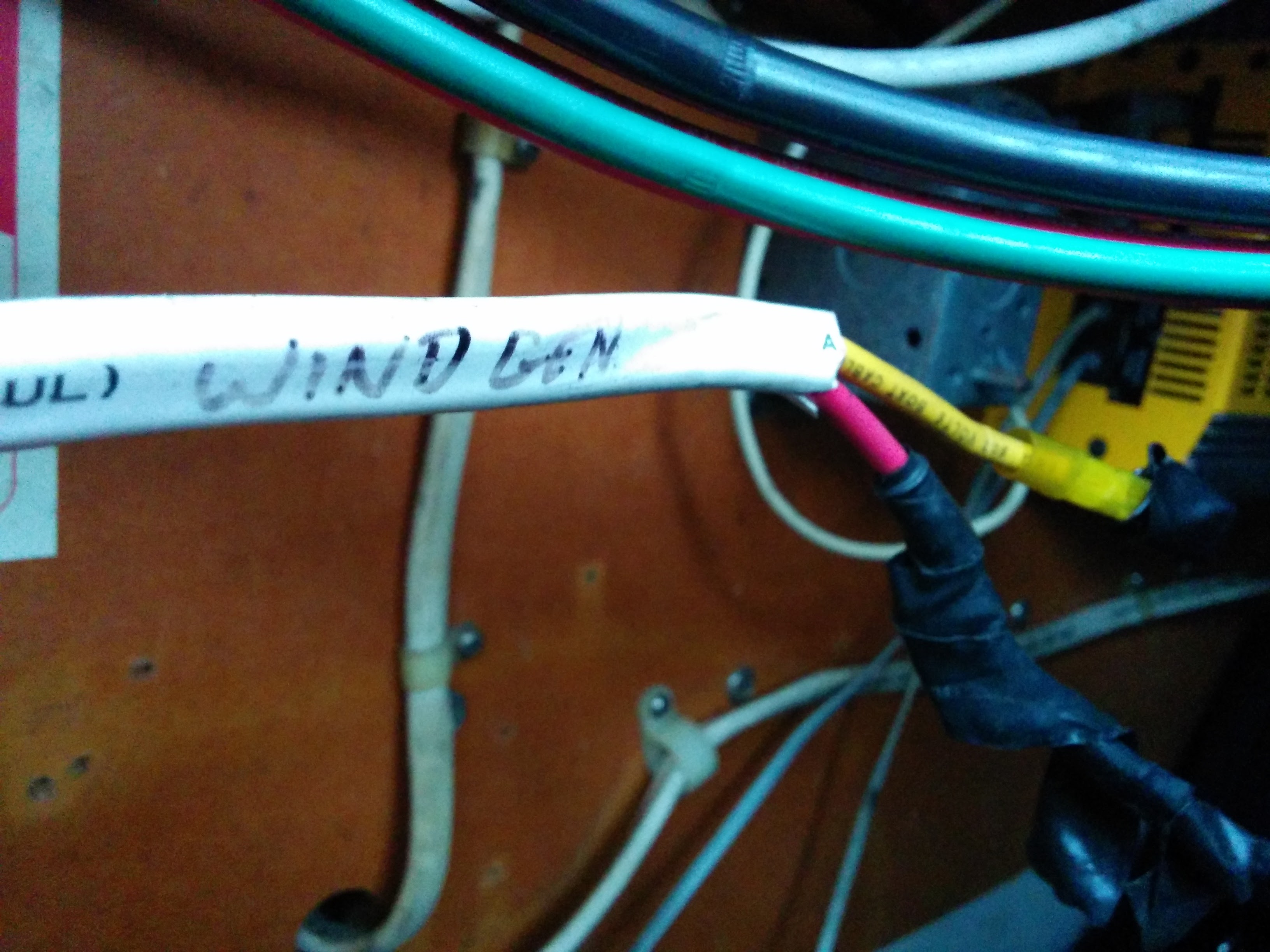
Oh, our boat has a wind generator? Just kidding, it has a wire labeled wind gen connected to nothing!
Fortunately our boat had a pretty good electrical setup, so nothing major was required – but on a 32 year old boat there are always minor improvements to be made.
Detective Work
One thing I discovered I like about electrical work is it’s like being a detective – there are lots of little mysteries to work out. Electrical wiring is like the cardiac system of your boats – lots of arteries and veins leading everywhere and serving useful functions – or serving no function at all! One of the surprises was how many old wires had been left in place after boat hardware was removed.
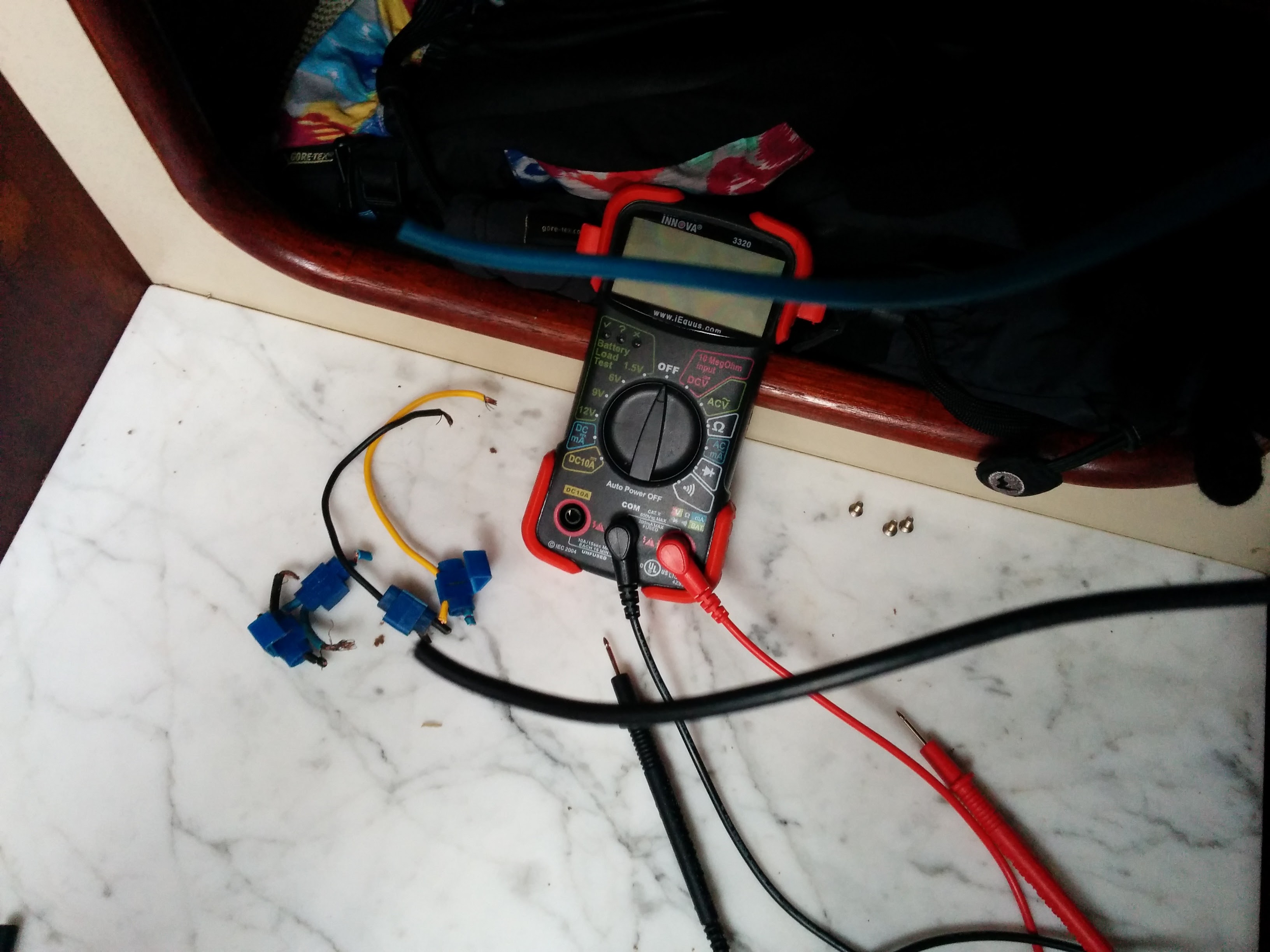
We discovered our boat once had, but no longer has, the following:
- wind generator
- solar panels
- telephone cable (shore hookup for a liveaboard, in the age of telephones)
- spare anchor light on top of the stern radar pole
Other ways our boat had been de-cruiser-ified included removal of:
- lazy jacks
- EPIRB
- parachute sea anchor
- two water tanks (reducing capacity from 75 gallons to 29)
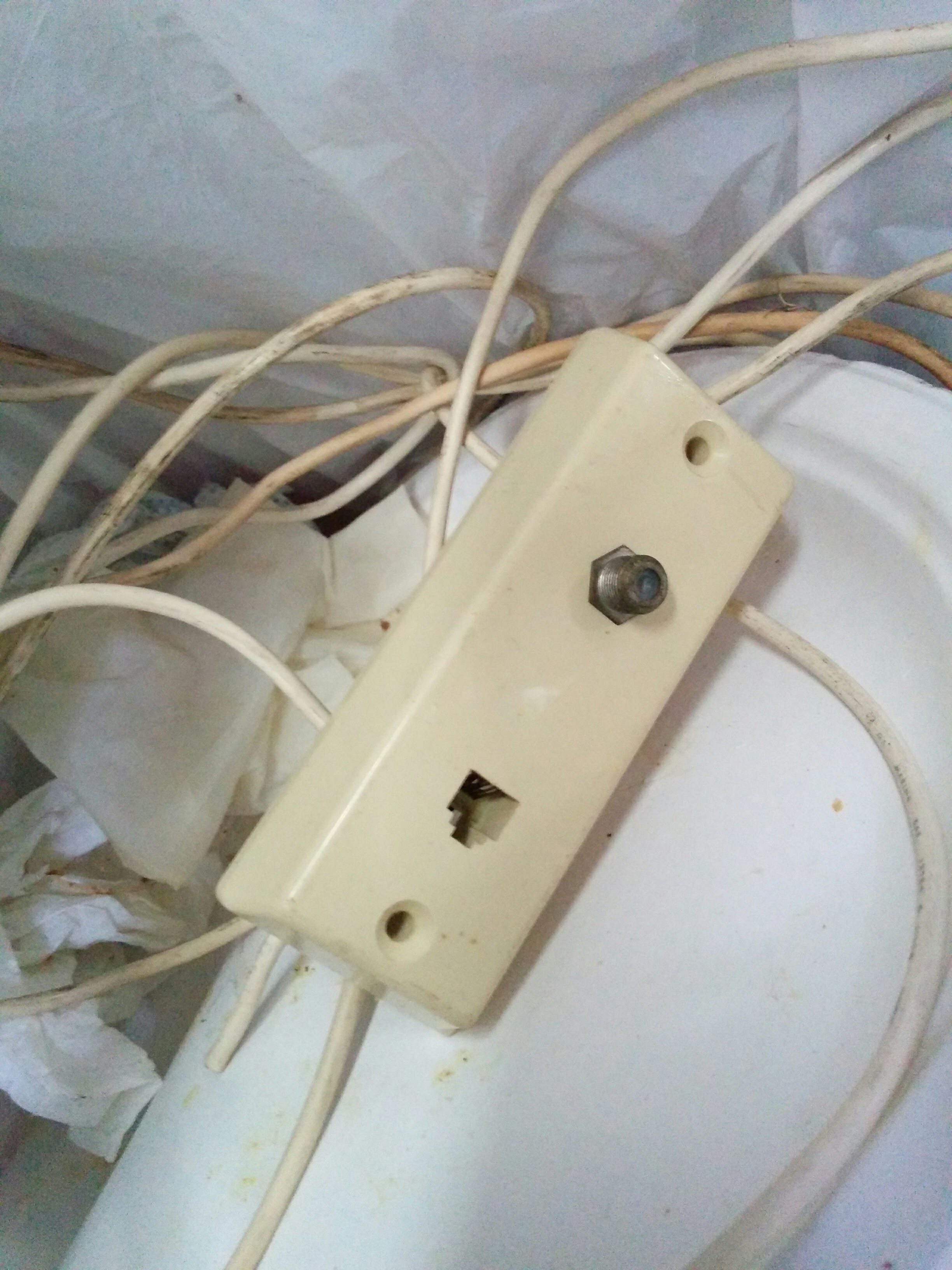
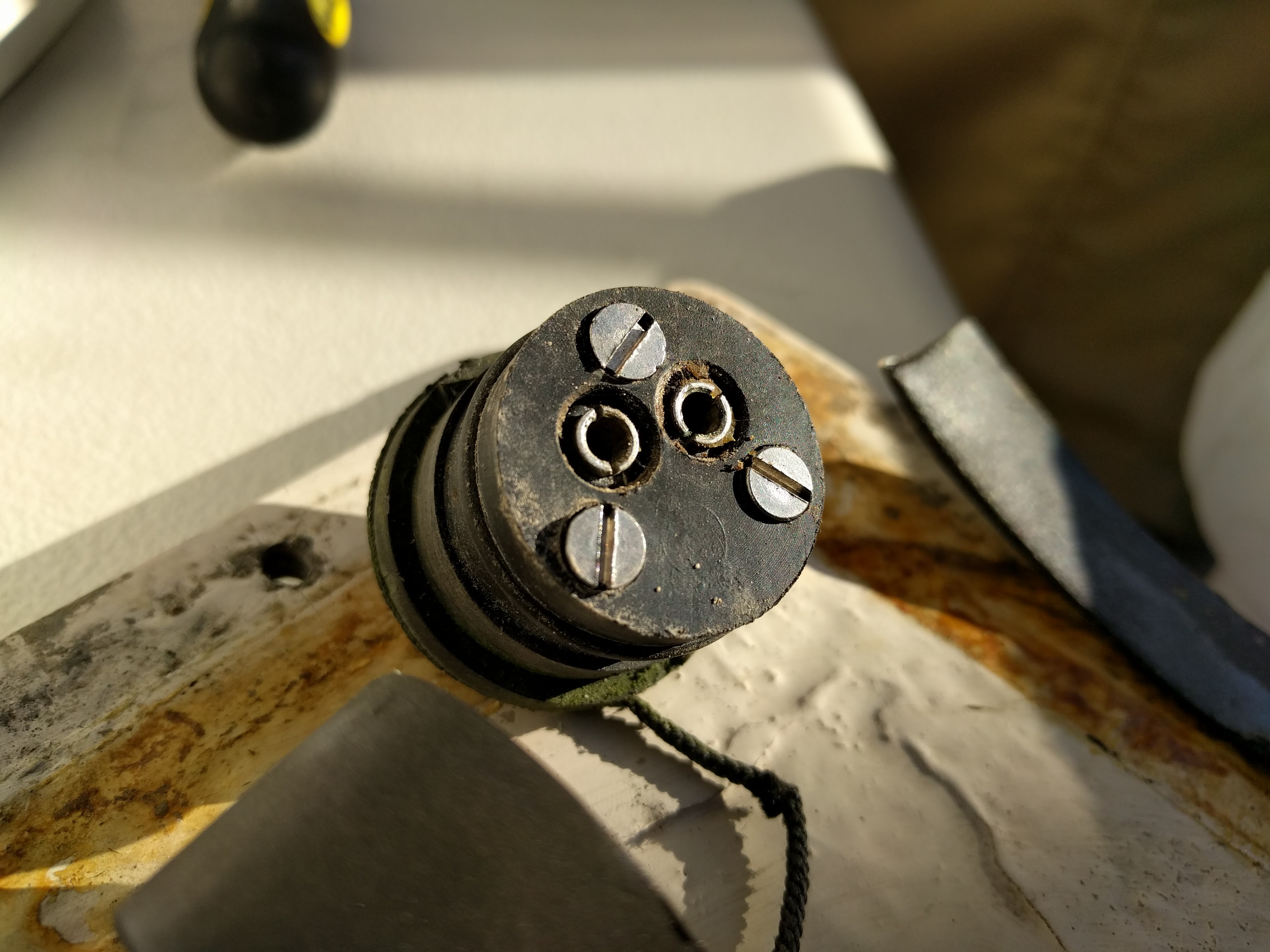
Old cockpit power port – for what I don’t know
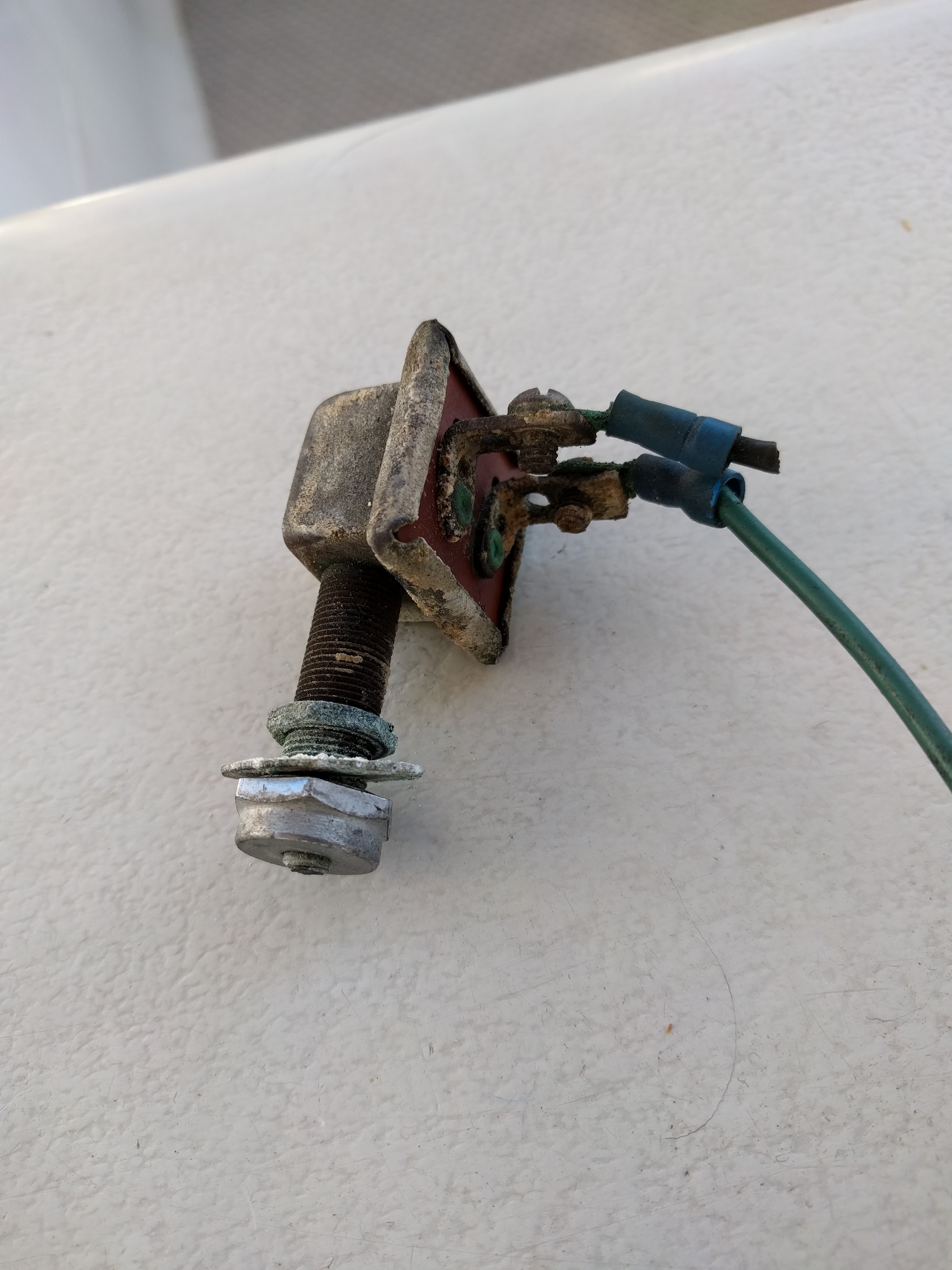
Old cockpit pull switch – going to … nothing?
On the one hand it seems a shame because we’re cruisers (we’ve added the lazy jacks back!), but most of the other removals we don’t really mind – they actually simplify the boat. With our water tankage I thought having only 29 gallons would be a problem – but with conservative usage we found it lasts the two of us over a week.
Simplify, Simplify, Simplify
To me, electrical projects were all about an opportunity to simplify. Removing old wiring makes it easier to trace the things you do care about when something breaks.
A prior owner (or two) really liked lots of lights! When we got the boat, it had 24 interior lights installed – for a 38’ boat! I suppose it’s not that surprising given they were probably installed before the days of cheap, high powered LED headlamps and efficient interior LED lights. Some of the incandescent lights were so dim that replacing 2 lights with 1 LED provided the same amount of light (at well less than ½ the energy usage).
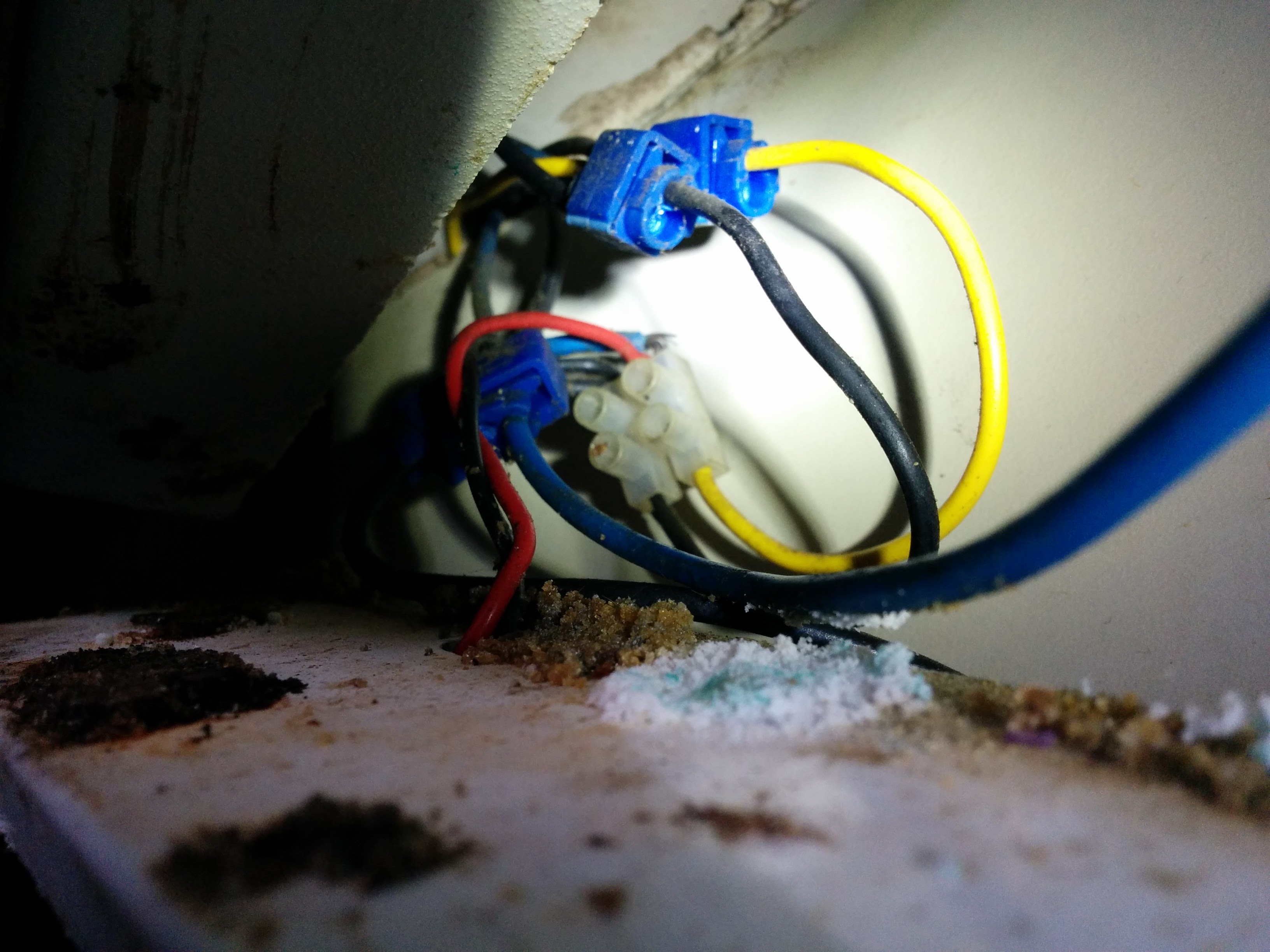
Corrosion on the back side of fluorescent light fixtures
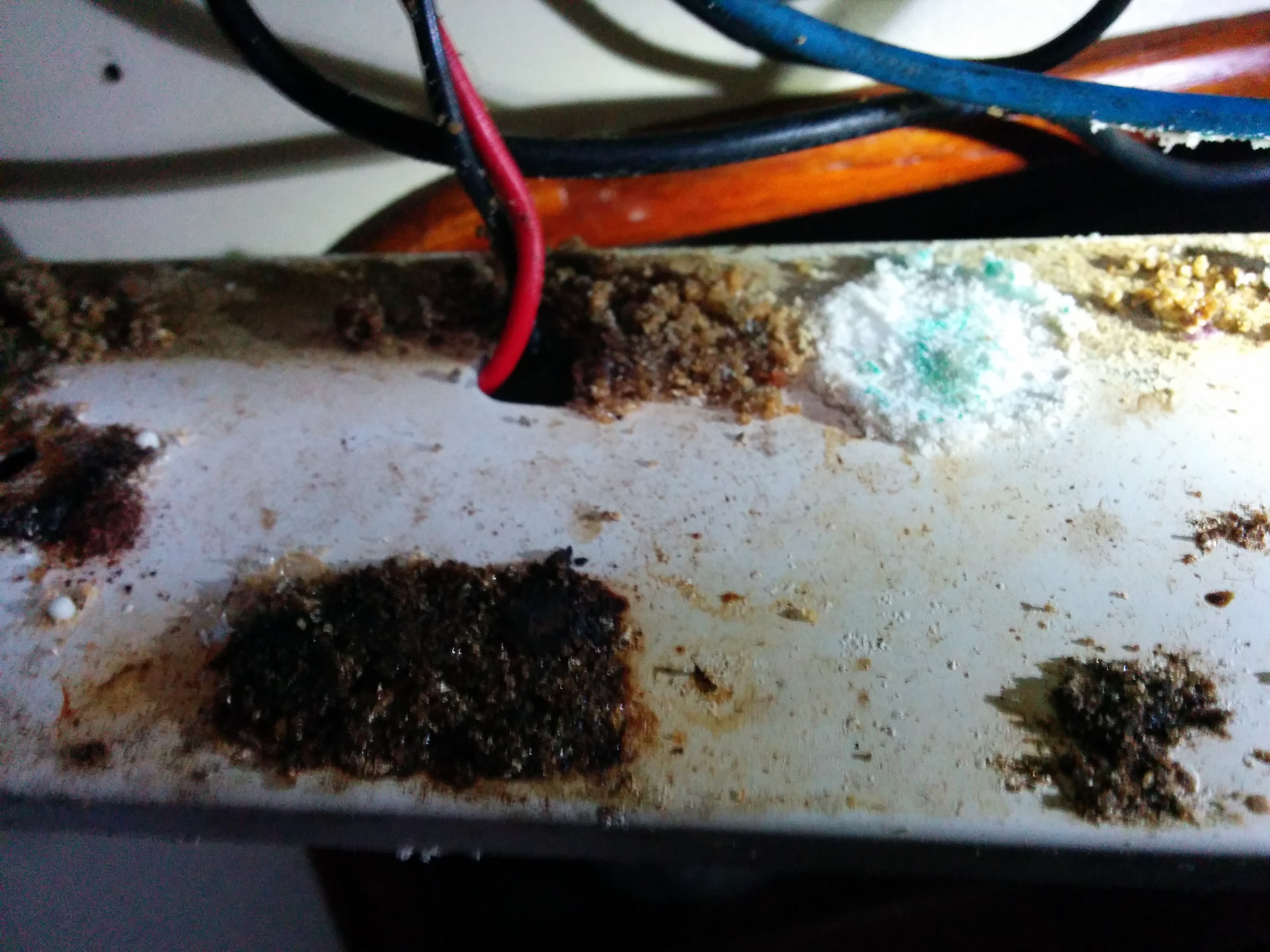
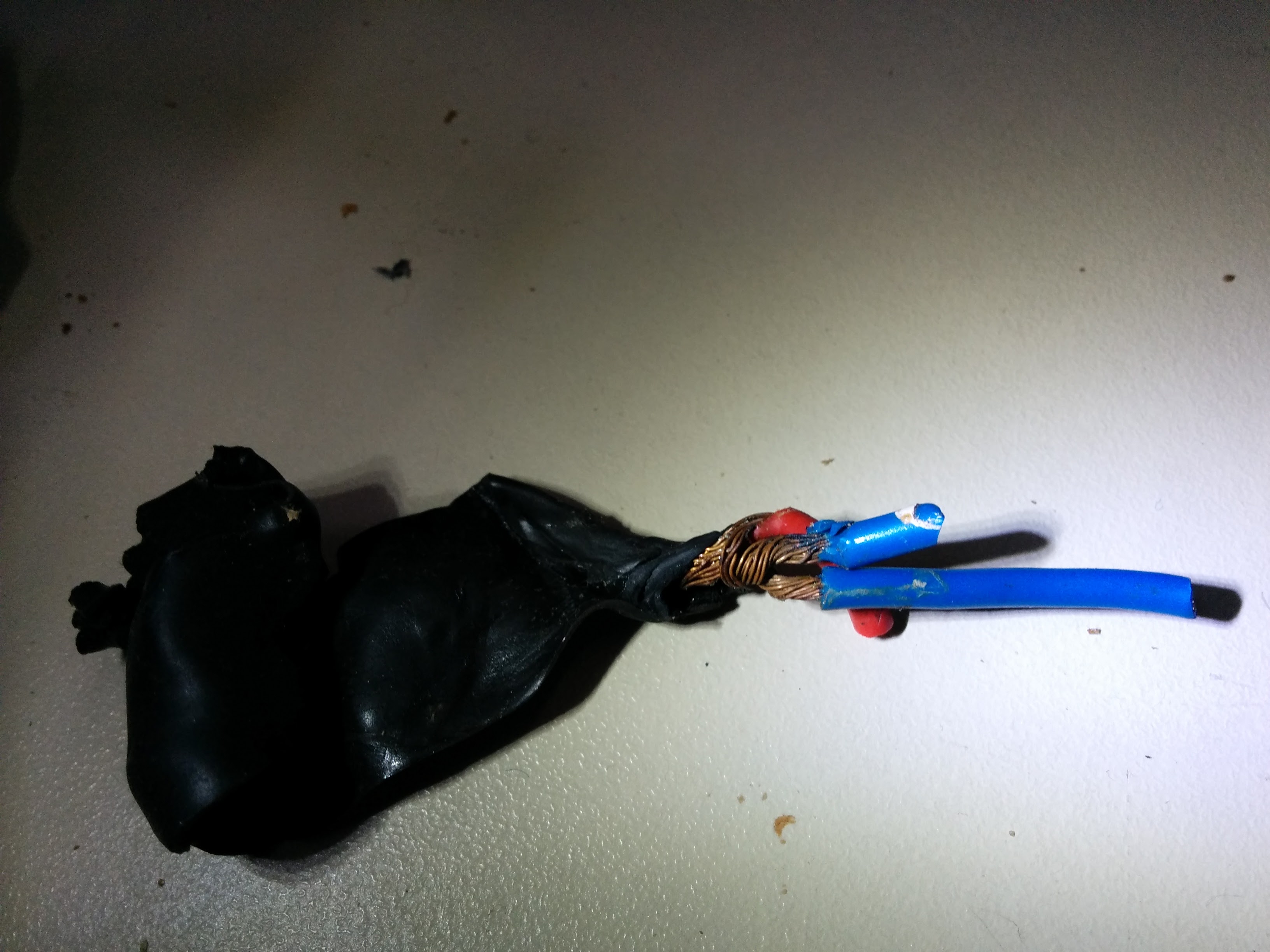
One method of connecting lighting – twist the wires together and wrap in lots of electrical tape – I don’t recommend this!
Our relatively simple electrical system is a blessing rather than a shortcoming. From our 1-month cruise last year we found we could live on 10-15 amp hours per day. With a 200 Ah bank, we can go a week just fine with no special charging systems. I see many boaters spending tremendous effort and money on their 300+ Ah banks with diesel powered generators and other complications. For now, we’re very happy not to have to do that.
Time Consuming
Electrical projects take a long time!
I’ve found electrical projects take 2x to 4x as long as I think they’re going to take. I have a new appreciation for marine electricians. The main reason they take so long is you spend a lot of time pulling wires through tight corners of the boat – places that are difficult to access – and the wires need to be secured with zip ties or other cable securing mechanisms every foot or so.
And if you care about making everything neat and secure, zip tieing or otherwise securing takes a while.
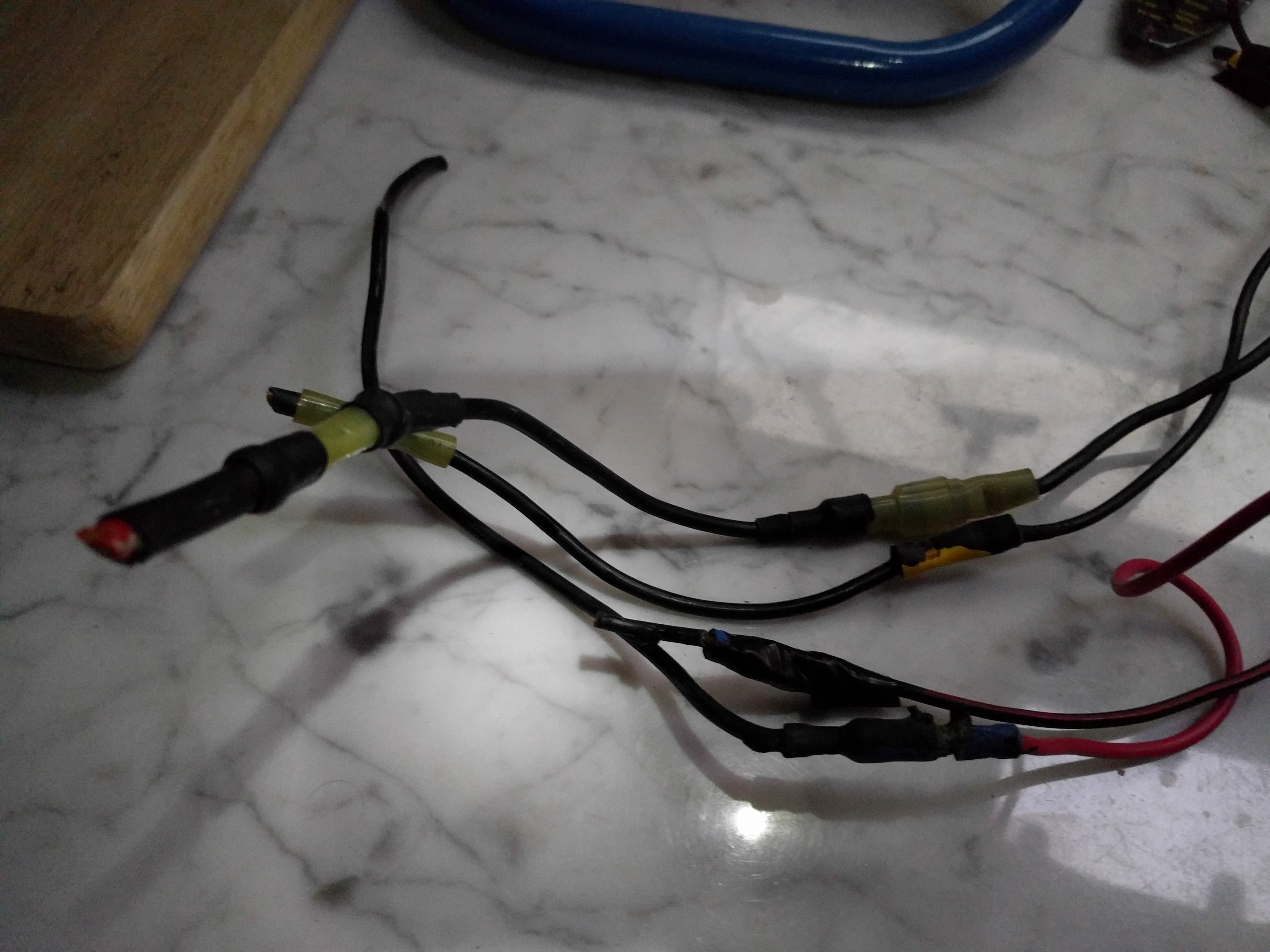
These are just a single positive and negative cable for the fresh water pressure pump, with 6 splices in the wires! It’s no surprise they failed.
Blue Sea Terminal Blocks
One of the confounding issues I encountered was a relatively minor one – Blue Sea terminal blocks don’t fit the Marinco Ancor ring terminals! These two products are the standard sold in many marine stores. This is like if the company making screws made screws incompatible with the company making the nuts. It doesn’t make sense.
Yes it’s not a big problem – I discovered I can clip the ring terminals sides with my wire cutters (which is better than jamming the ring terminal in and bending it).
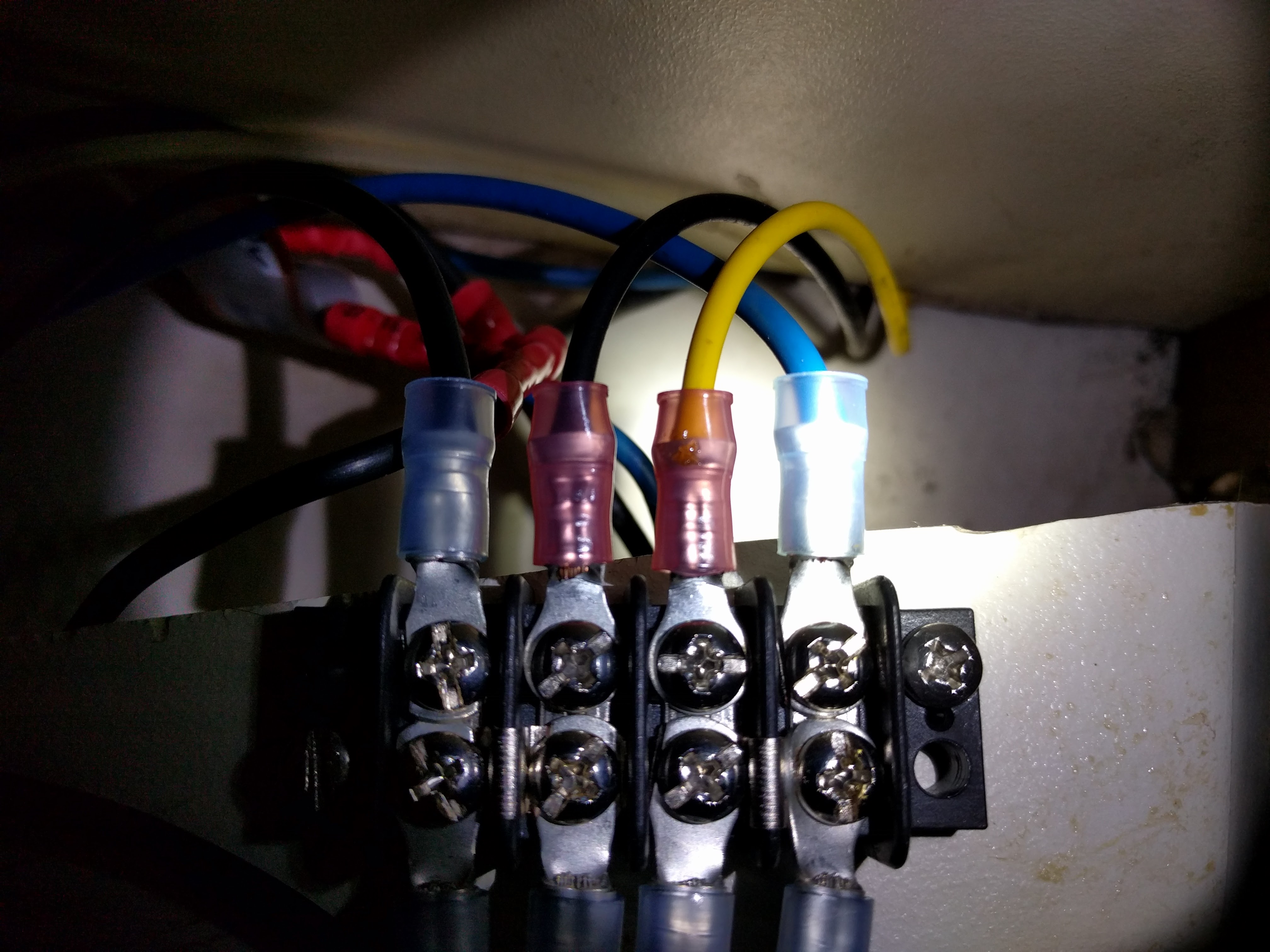
If you look closely, the 2nd + 3rd rings on the bottom I cut in order to fit (and the top left one), and the bottom right one is bent
I emailed Marinco Ancor and they said they didn’t know but would ask their PM. I later emailed Blue Sea, and they said they were aware of this and the terminal blocks are a resale product (meaning they didn’t design it themselves I think). They recommended using 3M or Panduit ring terminals instead, which are narrower and should fit.
I had trouble finding 3M or Panduit ring terminals though, so I ended up finding a new brand of terminal blocks and ring terminals. It turns out there are much cheaper options available when you look outside of marine stores/websites – and the products are just as high quality. I used WaytekWire.com and GenuineDealz.com and bought 50 ring terminals for the same price two 6 packs of the marine-store ones would’ve cost.
Here’s what I went with:
- Cooper Bussmann terminal blocks
- Molex ring terminals, 16-14 AWG, #6 screw size, nylon insulated with sleeve
- Molex ring terminals, 16-14 AWG, #10 screw size, nylon insulated with sleeve
- 20A terminal block jumpers from GenuineDealz

I can help fill in some mysteries:
(1) LF 38 had 104 gallons using 3 tanks originally.
(2) The cockpit power plug was either for a wheel autopilot (Autohelm 3000) or a search light.
(3) Anchor terminals fit just fine on Blue Seas terminal blocks–you just have to use the proper size of each. I always use 30A terminals except for instruments.
(4) As you increase instrumentation your power requirements will increase.
Bob
Thanks Bob.
Re: 3) Ancor terminals – I was buying 20A terminal blocks with 16-14 AWG ring terminals. They would probably fit 30A blocks, but I don’t need 30A for lighting. Seems like if they’re going to manufacture 20A blocks, they should make something that fits them.
Re: 4) Agree our power needs may go up eventually, but I can’t think of any instrumentation we need to add. The main thing would be if we added a stronger autopilot, and started actually using the autopilot regularly. Right now when we’re sailing I just enjoy it too much to give up hand steering. Autopilot is nice when motoring, but I don’t count that electrical use since the alternator cancels out the drain.
Patrick,
I literally have just dealt with what you speak, but given my limited knowledge of marine electrical, opted to hire it out. I prefer the DIY method (learning, personal satisfaction, etc.), but in this case I’m very happy with the results (the bigger $$$ outlay…. not so much). Good on you for tackling it yourself.
Enjoyed the post!
I completely rewired my 1979 US Yachts sailboat a few years ago, and it was a year long project of many of the same things you went through! I loved the hunt as well, finding different wires going to things that didn’t exist anymore, or just generally understanding more about the whole electrical system. I felt afterwards far more confident in the system itself, knowing that I had touched every part, and replaced the really bad choices previous owners had made in the past – similar things to electrical tape, household parts (rusted and corroded) and much more.
Electrical projects are always very time consuming, but it is so much better having reliable systems and knowing them for yourself. Great job!